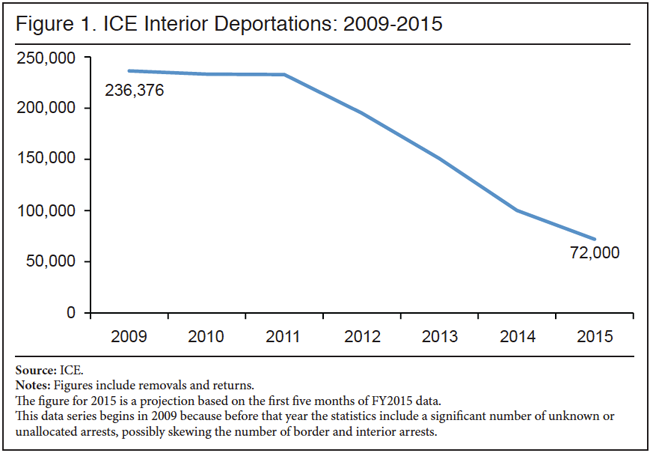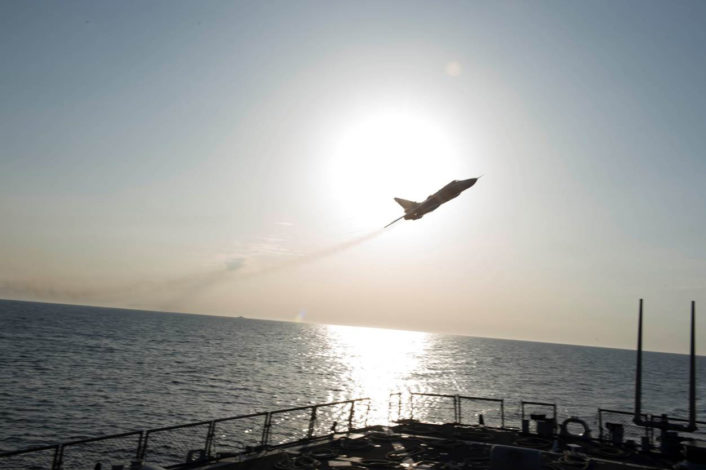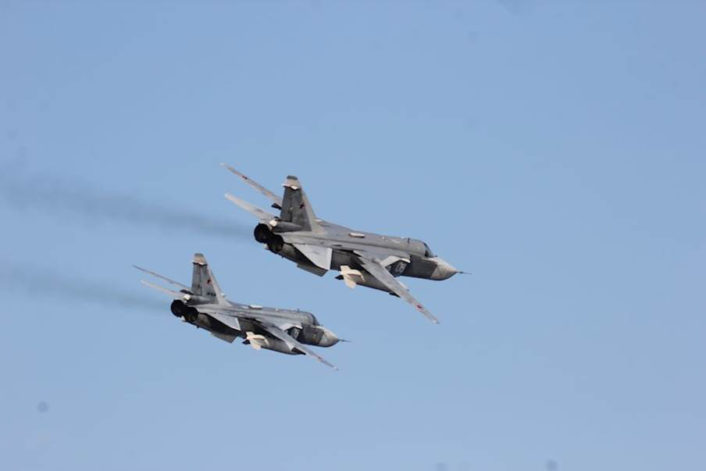Chairman Meets USS Alaska Sub Crew During Kings Bay Visit
NAVAL SUBMARINE BASE KINGS BAY, Ga., May 20, 2016 — “I hope we don’t ever need them, but if we do, these guys are ready,” the chairman of the Joint Chiefs of Staff said after meeting with sailors from the Ohio-class ballistic missile submarine USS Alaska here today.
Marine Corps Gen. Joe Dunford said he was impressed by the sailors and Marines he met at the base on the Florida-Georgia border. The Senior Enlisted Advisor to the Chairman of the Joint Chiefs of Staff, Army Command Sgt. Maj. John W. Troxell, accompanied the chairman during his visit.
Dunford said he wanted to “further his education” about the strategic nuclear triad. The USS Alaska is a nuclear powered ballistic missile submarine that carries 24 Trident D-5 nuclear-tipped missiles. It is, as one sailor said, “floating deterrence.”
A crew of 155 live in and around the various bits of machinery and weapons aboard the Alaska, which in Navy parlance is called a boat, like other submarines. It is a big boat, measuring 560 feet long and 42 feet wide. Blue and Gold crews take turns manning the boat to optimize the time it is on patrol. It is one of six ballistic missile submarines and two guided-missile submarines based at Kings Bay as part of Submarine Group 10.
Trident Training Facility
Dunford met with officers and enlisted personnel, and visited the Trident submarine training facility here. This is a 500,000-square-foot facility, where sailors can train up even as the submarine is being sailed by another crew.
The training facility — one of the largest buildings in Georgia — allows sailors to simulate the jobs they would perform on the boat. This includes everything from patching leaks and fighting fires to rehearsing the launching procedure for Trident missiles and loading and firing torpedoes.
Dunford boarded the Alaska, which was floating inside a huge building the sailors call “the barn.” Security was extremely tight, as it should be when nuclear weapons are in the mix. The general observed sailors conducting a drill aboard the boat and then toured it.
Future Visits
The chairman will visit bases housing the other two legs of the strategic nuclear triad — strategic bombers and intercontinental ballistic missiles — in the coming months. He has already visited U.S. Strategic Command at Offutt Air Force Base, Nebraska, and the Joint Interagency Space Center in Colorado Springs, Colorado.
***** What is going on and why is this news?
China’s Nuclear Subs Are Ready to Terrorize the Sea
Beijing will soon be able to launch nuclear missiles from the sea. And that’s going to make it harder to deter any future Chinese aggression.DailyBeast: China’s about to join an exclusive club for nuclear powers. After decades of development, 2016 could be the year the Chinese navy finally sends its ballistic-missile submarines—“SSBN” is the Pentagon’s designation—to sea for the first time for operational patrols with live, nuclear-tipped rockets.
If indeed the Jin-class subs head to sea this year, China will achieve a level of nuclear strike capability that, at present, just two countries—the United States and Russia—can match or exceed.
“China will probably conduct its first SSBN nuclear deterrence patrol sometime in 2016,” the Pentagon warned in the latest edition of its annual report on the Chinese military, published in mid-May (PDF). Once the Jins set sail, Beijing will command a nuclear “triad” composed of ground-, air-, and sea-launched nuclear weapons.
That’s a big deal, according to the dominant theory of nuclear warfare. “The theory is that a diverse array of delivery systems creates survivability by complicating a first strike,” Jeffrey Lewis, an expert on nuclear geopolitics with the James Martin Center for Nonproliferation Studies, told The Daily Beast.
In other words, if a country possesses all three kinds of nukes, it’s harder for an enemy to wipe them all out in a surprise attack. And if you can’t destroy your enemy’s entire atomic arsenal, he can nuke you back—so you’d better not attack at all.
The word for that is “deterrence.” And China could be on the verge of gaining a deterrence capability that most countries simply can’t afford. China reportedly possesses several hundred atomic warheads, but no one outside of the Chinese Communist Party leadership and, perhaps, top foreign intelligence agencies, knows the exact number.
Regardless, that’s far fewer than the roughly 7,000 warheads that the U.S. and Russia each possess but more than any of the world’s other nuclear powers, with the possible exception of France. And compared to Beijing only Moscow and Washington boast a wider range of launchers for their nukes.
The Chinese military’s rocket branch maintains around a hundred long-range rockets in land-based silos. The Chinese air force’s H-6 bombers first dropped atomic bombs back in the 1970s—and modern versions of the bombers can fire cruise missiles that are compatible with nuclear warheads. When the Jins are finally war-ready, they will complete Beijing’s land-air-sea atomic triad.
To be fair, the Chinese vessels are, in a sense, playing catch-up. The Soviet Union and the United States deployed the first nuclear ballistic-missile submarines at the height of the Cold War in the 1960s—and France and the United Kingdom soon followed suit. Today the U.S. Navy’s 14 Ohio-class missile subs take turns quietly sailing deep in the Pacific and Atlantic Oceans, ready to fire their 24 nuclear-tipped rockets on a moment’s notice.
Russia, France, and the U.K. still operate SSBNs, and India is developing one of its own. The Chinese navy began tinkering with missile subs in 1981. The experimental Xia-class vessel and its JL-1 rocket were technological failures and never sailed on an operational mission.
Since 2007, the Chinese navy has completed four of the follow-on Jin-class subs and is reportedly planning on building four more. More than 400 feet long, a Jin can carry as many as a dozen JL-2 rockets, each with a range of 4,500 miles. A Jin sailing in the central Pacific Ocean could strike targets anywhere in the United States.
If the Jins finally deploy this year, a whopping 35 years will have passed since China first tried to develop a functional SSBN. But developing a missile sub is hard.
Expensive, too. China has not disclosed the cost of the Jins, but consider that the U.S. Navy plans to spend $97 billion replacing its 14 Ohios with a dozen new submarines. Missile subs are big and complex—and their rockets are, too. Training reliable crews and designing an effective command-and-control system are equally difficult to do. Chinese subs have been plagued with quality-control problems.
“While it is clear that the [Chinese navy] is making strides towards correcting these issues, the capabilities of China’s nuclear-powered submarine fleet remain in a process of maturity,” the Nuclear Threat Initiative, a Washington, D.C.-based advocacy group, explains on its website.
To Beijing, achieving a nuclear triad is apparently worth the labor and expense. But Lewis cautions against reading the development of the Chinese atomic triad as the result of some sort of clear, top-down policy.
Officials in the U.S. and Russia take for granted the wisdom of a nuclear triad. But in fact, the triads in both of those countries developed as a result of rivalries within their respective militaries. During the early Cold War, the U.S. Navy lobbied lawmakers and the president for missile submarines in part to wrest from the U.S. Air Force some of the funding and prestige that came with being America’s main nuclear strike force.
The same internal conflict could be behind the Jins’ development. And whether China’s missile subs set sail for the first time this year could depend as much on politics as on technology and training. “There are a lot of rivalries and intrigues playing out that might result in a triad—or not,” Lewis said.










/cdn0.vox-cdn.com/uploads/chorus_asset/file/6513015/107077722.0.0.jpg) Photo by John Moore/Getty Images
Photo by John Moore/Getty Images